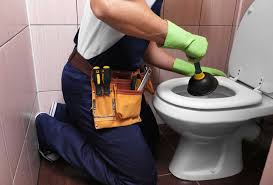Dealing with a toilet blockage can be a frustrating and unpleasant experience. Whether it’s a minor clog or a severe obstruction, knowing how to handle the situation can save you time, money, and stress. In this guide, we’ll walk you through the steps to identify, address, and prevent toilet blockages effectively.Understanding the Causes of a Toilet BlockageToilet blockages can occur for various reasons. Here are some of the most common causes:
- Excessive Toilet Paper: Using too much toilet paper can overwhelm the drain and cause a blockage.
- Non-Flushable Items: Items like wet wipes, sanitary products, or cotton balls should never be flushed as they don’t break down easily.
- Hard Water Deposits: Over time, mineral buildup from hard water can narrow the pipes and lead to blockages.
- Foreign Objects: Accidentally dropping objects like toys or jewelry into the toilet can cause immediate clogs.
Step-by-Step Solutions for a Toilet BlockageIf you’re facing a toilet blockage, follow these steps to resolve the issue:
- Assess the Situation: Determine the severity of the blockage. If water is rising to the brim, avoid flushing again to prevent overflow.
- Use a Plunger: A plunger is the first tool to try. Ensure you have a good seal around the drain and push firmly to create suction.
- Try a Toilet Auger: If the plunger doesn’t work, a toilet auger (or snake) can reach deeper into the pipes to dislodge the clog.
- Use a Natural Solution: A mixture of baking soda and vinegar can sometimes break down minor clogs. Pour it into the toilet and let it sit for 30 minutes before flushing.
- Call a Professional: If all else fails, it’s time to call a plumber to avoid damaging your plumbing system.
Preventing Future Toilet BlockagesPrevention is always better than cure. Here are some tips to keep your toilet running smoothly:
- Limit Toilet Paper Use: Use only the necessary amount of toilet paper to avoid overloading the drain.
- Dispose of Non-Flushables Properly: Always throw non-flushable items in the trash.
- Regular Maintenance: Periodically use a natural drain cleaner to keep pipes clear.
- Educate Household Members: Ensure everyone in your home knows what can and cannot be flushed.
When to Seek Professional HelpWhile many toilet blockages can be resolved with DIY methods, some situations require professional intervention. Consider calling a plumber if:
- The blockage recurs frequently, indicating a deeper issue in the plumbing.
- You notice water backing up in other drains, suggesting a sewer line problem.
- There’s a foul odor coming from the toilet, which could signal a broken seal or pipe.
ConclusionA toilet blockage is a common household issue, but with the right knowledge and tools, you can tackle it effectively. By understanding the causes, following the correct steps to clear the clog, and taking preventive measures, you can minimize the chances of future blockages. Remember, when in doubt, don’t hesitate to call a professional to avoid further damage to your plumbing system.

